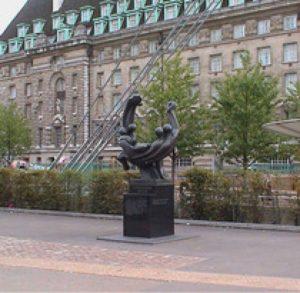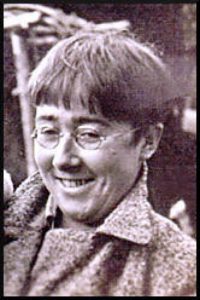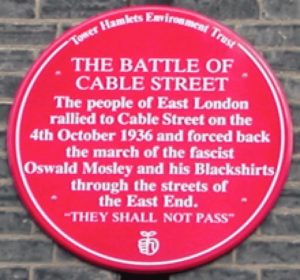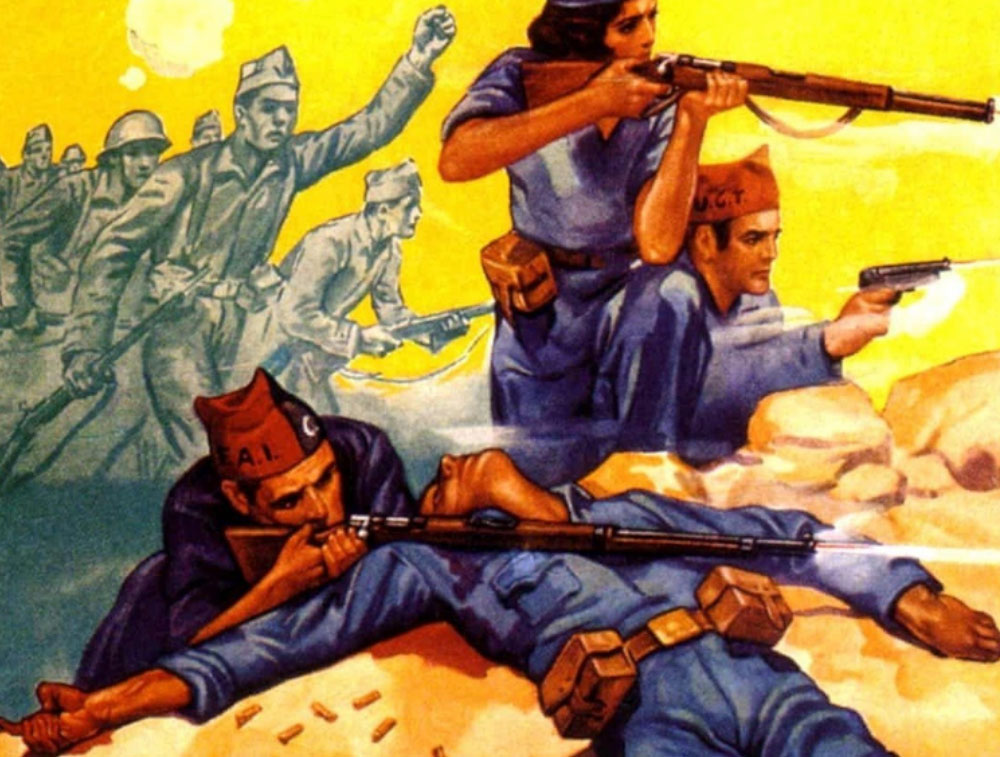The Spanish Civil war took place between 1936 and 1939. In 1936 Spain was ruled by a moderate, liberal government of Republicans, supported by communist and socialist parties. Although they had been elected they were opposed by The Nationalists who were led by General Franco the controller of the army who was supported by a number of conservative groups. The Nationalists won the war in early 1939 and ruled Spain as a dictatorship until Franco’s death in November 1975. Franco supported Hitler and Mussolini during the Second World War.
Hampstead Old Town Hall was involved in The Spanish Civil War in two ways. In 1936, recruitment meetings were held there to encourage people who opposed the war in Spain to join the International Brigade and in January 1964 an exhibition called Spain Fights for Freedom was held there.

The Inscription says:
No Pasaran / They shall not pass
The International Brigade
A memorial to the 2,500 International Brigade volunteers who left from Britain and Ireland to help the Spanish republicans can be seen in Jubilee Gardens on the South Bank in London. It was moved to its present place in 2012.
The 2,500 International Brigade volunteers who left from Britain and Ireland were among 35,000 men and women from 53 countries who went to the aid of the Spanish Republic during the Spanish Civil War of 1936-1939. They faced enormous odds. The treacherous generals who rose up against Spain’s elected government won the war with the help of Nazi Germany and fascist Italy. Those regimes were defeated in the Second World War that started, as the volunteers had predicted, a few months after the civil war ended. Democracy was restored in Spain in 1977 and in 2007 the Spanish parliament awarded Spanish citizenship to all surviving International Brigade veterans.
As well as the United Kingdom and Ireland, people came from Australia, New Zealand, South Africa, Cyprus and other Commonwealth countries. The last surviving British member of the International Brigades, Geoffrey Servante, died in April 2019 aged 99.
It is estimated that during the entire war 15,000 volunteers died in combat. As well as Spanish women soldiers, women from across the world came to fight in front line units from Canada, Poland, Switzerland, America and Germany. The British artist Felicia Browne was killed in action during August 1936: she had studied sculpture in Germany and was appalled at what was happening there with the rise of the Nazis. Another famous female Brit was Jessica Mitford – one of the infamous Mitford Sisters – who ran away to Spain with her cousin Esmond Romilly to aid the Spanish cause. At the time a devout Communist, this action caused ructions not just within her family but in the British Press especially as her sister Diana was the mistress (later wife) of Oswald Mosley – the leader of the British fascists and a supporter of Hitler- whilst her sister Unity was a dedicated Nazi devoted to the Fuhrer.

Felicia Brown
Felicia Brown
Many artists and writers were volunteers. The rise of Fascism in Europe led to attacks on artists and writers and their work. Books were burnt in public and so were works of art: in Germany, books targeted for burning were those viewed as being subversive or anti-Nazi and included books written by Jewish, pacifist, liberal, religious and classical writers.
Most volunteers had never been to Spain before the war. They saw the war in Spain in broader European terms and part of a fascist movement that was growing in power throughout Europe, with Hitler gaining power in Germany and Mussolini in Italy. Many British citizens who volunteered were aware of the possible rise of Fascism on home shores due to the work of Oswald Mosley: when he organised a march through the East End in October 1936, an estimated 20,000 demonstrators turned out to stop him carrying banners that said No Pasaran, the battle cry of the Spanish Republicans which means “They Shall Not Pass”.

